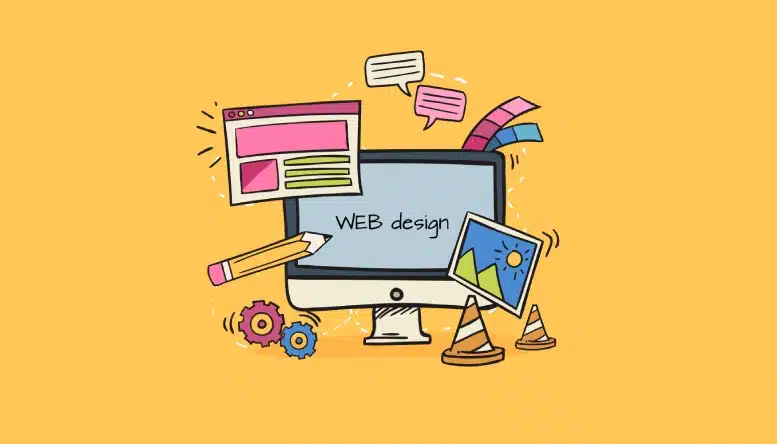Aligned Position Web Design: Building Responsive, Mobile-Friendly Websites for Modern Users
Aligned Position Web Design: Building Responsive, Mobile-Friendly Websites for Modern Users
Blog Article
The Most Effective Sorts Of Website Design to Enhance User Experience and Involvement
In the ever-evolving landscape of digital communication, the effectiveness of Web layout dramatically affects customer experience and engagement. Different style strategies, such as minimalist, responsive, and interactive formats, each deal distinct advantages that can cater to varied individual requirements. Comprehending which kinds of website design finest offer these purposes can be critical for businesses aiming to boost consumer satisfaction and retention. The concern remains: which design aspects really resonate with users and foster meaningful engagement? The expedition of these principles exposes essential insights that might redefine your approach to Web design.
Minimal Web Design
As digital landscapes come to be significantly cluttered, minimalist Web design has actually become a powerful method to improving user experience. This design philosophy prioritizes simpleness, focusing on important components while removing unneeded diversions. By utilizing ample white area, simple navigation, and a minimal color scheme, minimalist style cultivates quality and guides customer focus to crucial content.
The core concept of minimalist website design is to create a smooth interaction for customers. By reducing cognitive tons, customers can promptly grasp details without really feeling overwhelmed. This direct technique not only boosts usability yet additionally motivates engagement, as visitors are a lot more most likely to discover a website that is visually enticing and very easy to navigate.
In addition, minimalist style usually stresses typography and imagery, utilizing these components tactically to convey messages effectively. This emphasis on vital components can boost brand identity and create a remarkable individual experience. Basically, minimalist Web layout is not simply a pattern; it is a thoughtful methodology that identifies the importance of user-centered layout. By removing extraneous elements, developers can create a much more engaging, reliable, and satisfying Web experience for all users.
Responsive Web Design
In today's diverse electronic setting, receptive website design has become vital for producing a seamless customer experience throughout a plethora of gadgets. As customers access sites on mobile phones, tablet computers, desktop computers, and laptop computers, the capability of a site to adapt its design and content to different screen dimensions and resolutions is vital.
Responsive website design uses flexible grids, images, and CSS media inquiries to guarantee that Web material is presented ideally, despite the device used. This method not just enhances the visual appeal of an internet site however also considerably boosts use. Individuals are a lot more likely to involve with a site that offers a consistent experience, as it removes the stress of needing to focus or scroll excessively.
By adopting receptive design, organizations can improve their visibility and get to a broader audience. In recap, responsive Web layout is an essential practice that enhances individual experience, interaction, and general satisfaction.
Interactive Website Design
Receptive website design lays the groundwork for enhancing customer experience, yet interactive Web design takes this an action additionally by involving users in an extra vibrant method - Aligned Position Web Design. By including components such as computer animations, clickable prototypes, and real-time feedback, interactive website design captivates individuals, attracting them right into a richer surfing experience
This approach not only fosters engagement however likewise motivates customers to check out material actively rather than passively consuming it. Methods such as gamification, where individuals earn benefits for finishing tasks, can substantially boost the moment spent on a site and improve total complete satisfaction. Additionally, interactive attributes can simplify intricate information, making it more delightful and digestible.

Including interactive design aspects can additionally cause higher conversion rates, as users are more probable to involve with a site that actively involves them. Aligned Position Web Design. Inevitably, interactive website design transforms user experiences right into memorable trips, guaranteeing that site visitors return time and again
Apartment Layout
Characterized by its minimalistic technique, level design stresses simpleness and functionality, stripping away unnecessary elements More about the author and concentrating on essential attributes. This design approach focuses on usability, making certain that individuals can navigate user interfaces easily and efficiency. By employing a clean visual, level layout eliminates the clutter often found in a lot more ornate designs, thereby improving individual emphasis on material and capability.
The trademark of level design lies in its use of vibrant colors, basic typography, and geometric shapes. These elements contribute to an aesthetically appealing user interface that is both contemporary and friendly. Furthermore, flat style cultivates a feeling of clearness, permitting individuals to determine vital actions and info without disturbance.
In addition, level design is especially effective in receptive website design, as its simplicity equates well across various devices and display sizes. The absence of intricate structures and slopes decreases loading times, which is important for maintaining individual engagement. As electronic landscapes remain to progress, flat layout continues to be a pertinent choice for producing user-friendly internet sites that enhance overall experience. By concentrating on crucial attributes, flat style not just fulfills customer demands but likewise encourages seamless communication, making it a crucial part of effective Web design methods.
Adaptive Web Layout
Adaptive Web layout customizes the user experience by developing numerous taken care of layouts tailored to various screen dimensions and tools. Unlike receptive layout, which fluidly readjusts a single design, adaptive style uses distinct formats for specific breakpoints, ensuring optimum presentation on numerous platforms. This approach allows developers to focus on the special characteristics of each device, improving use by supplying precisely what users require based on their context.
Among the primary advantages of adaptive Web design is its ability to maximize lots times and performance. By offering tailored material and photos that fit the user's tool, internet sites can reduce data use and improve loading speeds. This is especially valuable for customers with slower connections or minimal data strategies.

Additionally, adaptive design helps with an extra regulated and consistent branding experience. Since developers create numerous designs, they can guarantee that the visual elements line up with the brand name's identification across different systems - Aligned Position Web Design. This causes a cohesive individual experience, boosting engagement and promoting individual retention
Final Thought
Minimal layout promotes clearness and focus, while responsive layout makes certain flexibility throughout different devices, advertising access. Jointly, these style approaches add to the production of easy to use atmospheres that not only boost satisfaction yet also drive greater conversion rates, underscoring their critical relevance in modern Web layout methods.

Minimalist layout fosters quality and focus, while responsive design guarantees versatility across different gadgets, promoting ease of access. Jointly, these style approaches contribute to the development of easy to use atmospheres you can try these out that not only improve satisfaction however also drive higher conversion rates, underscoring their essential importance in modern Web style techniques.
Report this page